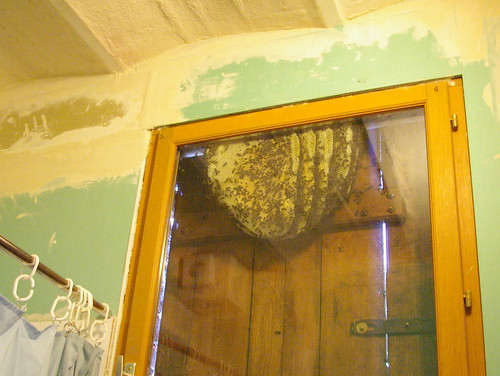
I went out to the hive this afternoon to find a big cloud of bees flying around the hive entrance, when things had been very calm this morning.
Was this some of that hive robbing that I'd read about in the books, I wondered? Did I need to freak out and run around in circles and spray the bees with liquid smoke and close up the entrance, as the books advise?

I called Kirk instead.
"Are they all facing the entrance?" he asked.
Yes.
"Orientation flight. You've got a big crop of new bees, and they're figuring out where the hive is. That's their orientation point. I'll bet they've all calmed down by now."
What makes them all come out at once?
"Well, they all hatch about the same time."
I really couldn't argue with that logic.
Apparently bees do their orientation flight at about 3 weeks of age, after they've spent time on various other tasks inside the hive. Here's Mark L. Winston, from
The Biology of The Honey Bee:
These flights tend to take place on warm, windless, sunny afternoons, and the synchronous emergence of many young workers from the nest inspired German researchers to call these "play flights"...
A single orientation flight generally lasts less than 5 minutes, and successive flights appear to increase in duration and distance from the colony. Remarkably, the stem length of certain brain interneurons shorten during the first flight, perhaps preparing the worker's nervous system to record and remember orientation stimuli...
But wait, it gets better:
Workers will void their feces during one of their first flights. (One of the hazards of sitting at nest entrances making orientation flight observations is the rapid accumulation of orange spots all over the white bee suits favored by honey bee researchers.)
I was apparently far enough away to avoid the Orange Special. Thanks for taking it outside, bees.
































